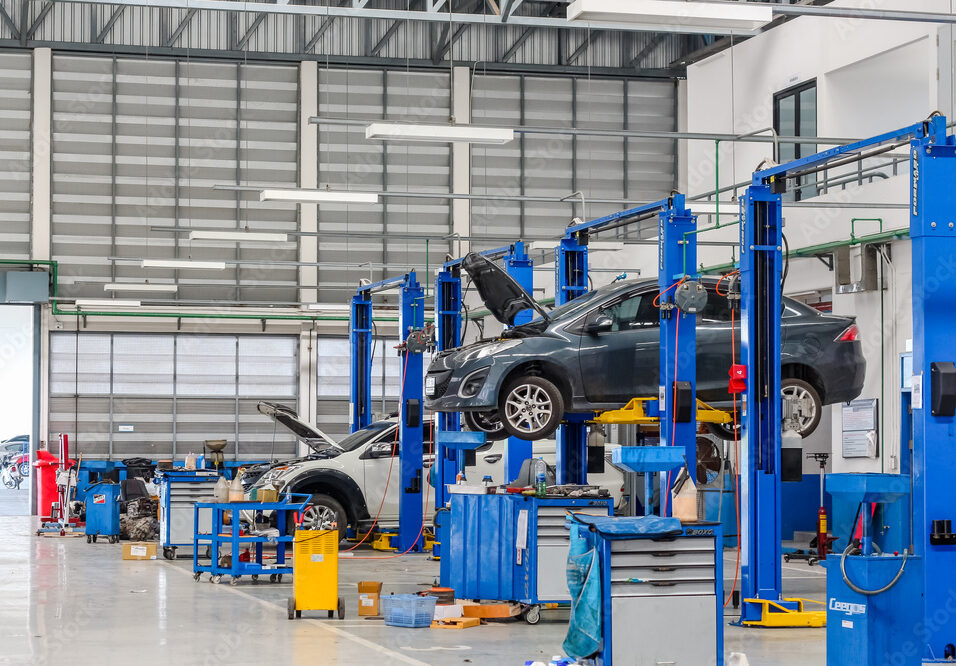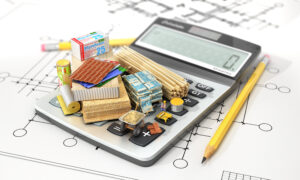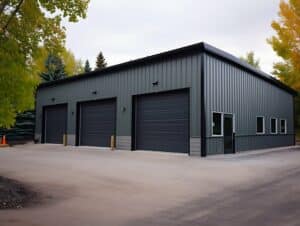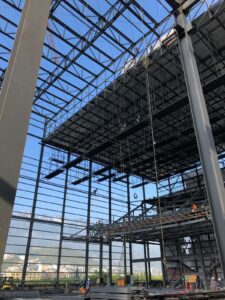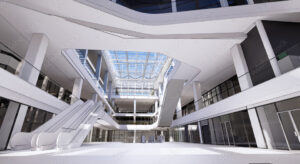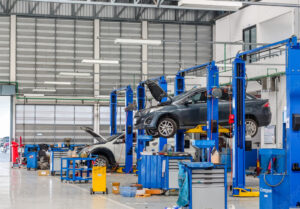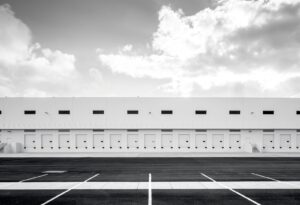Auto repair shop buildings and design play a crucial role in the successful operation of an automotive repair business. They provide a dedicated space for mechanics to work on vehicles, house equipment, and tools, and create a comfortable environment for customers.
The U.S. Automotive Service Market size is estimated to be USD 188.13 billion in 2024 and is expected to reach USD 251.52 billion by 2029, growing at a CAGR of 5.98% during the forecast period (2024-2029)
Understanding the basics of auto repair shop buildings is essential for anyone considering opening or upgrading their facility.
Table of Contents:
- Understanding the Basics of Auto Repair Shop Buildings
- Key Features of Auto Repair Shop Buildings
- Designing Your Auto Repair Shop Building
- Building Materials and Construction Methods
- Maintenance and Upkeep of Auto Repair Shop Buildings
- Conclusion
- Frequently Asked Questions
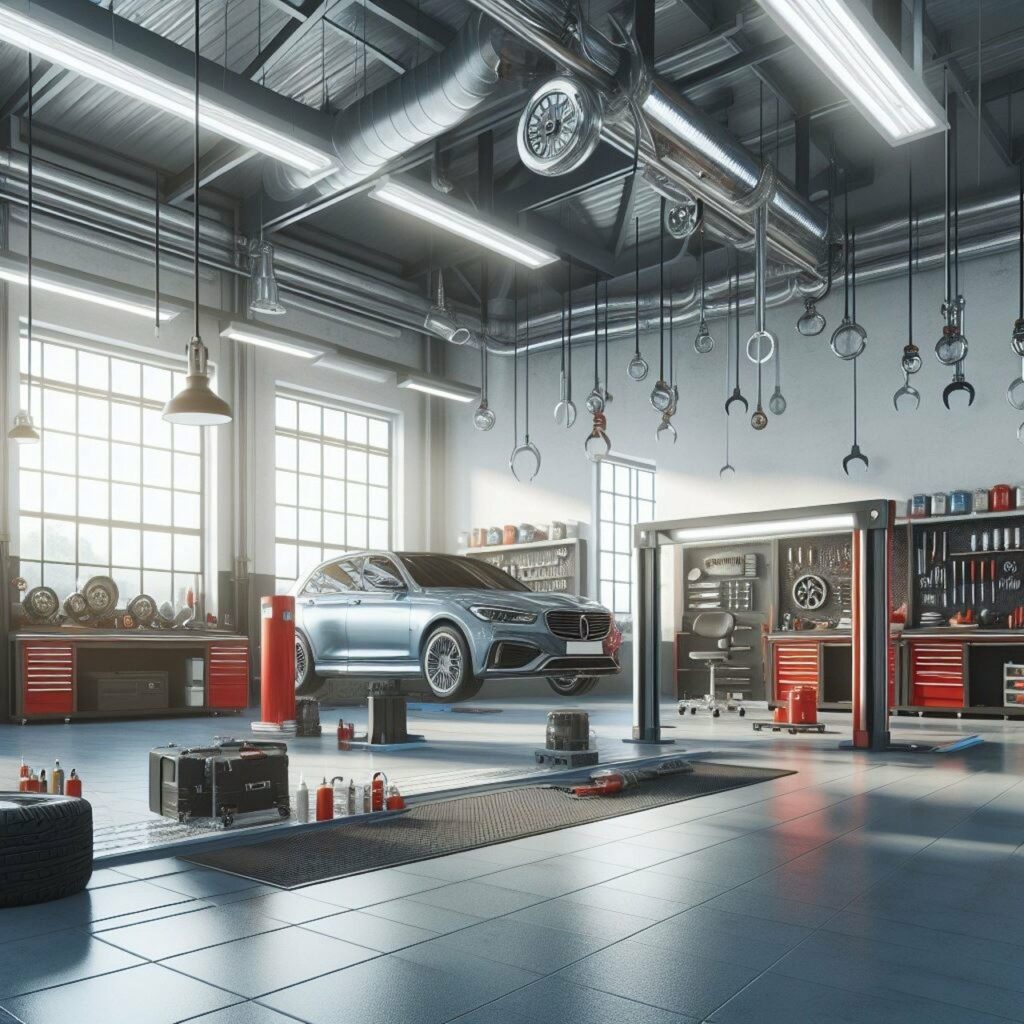
Understanding the Basics of Auto Repair Shop Buildings
Importance of Location for Auto Repair Shops
The location of an auto repair shop can significantly impact its success. Ideally, the shop should be situated in a convenient and easily accessible area, preferably close to major roads or highways.
This ensures that customers can easily reach the facility and makes it more convenient for them to drop off and pick up their vehicles. Additionally, having a visible location with ample parking can attract potential customers and increase the shop’s visibility.
Furthermore, proximity to complementary businesses such as auto parts stores or car dealerships can also be advantageous for an auto repair shop. This can create a symbiotic relationship where customers visiting these other establishments may be more likely to notice and utilize the repair shop’s services.
It can also lead to potential partnerships or referrals, further boosting the shop’s clientele.
Did You Know?
As of the fourth quarter of 2021, there were nearly 239,100 auto repair and maintenance centers in the U.S., which was a 2% increase from the previous year. (Statista)
Size and Space Requirements for Auto Repair Shops
The size and space requirements of an auto repair shop depend on its specific needs and the scale of operations. A well-designed shop should have enough space to accommodate repair bays, storage areas, customer waiting areas, and administrative offices.
It is important to consider the number of technicians and the types of services offered when determining the size of the shop. Adequate space is crucial to ensure smooth workflow and efficient operations.
In addition to the physical layout, ventilation and lighting are essential considerations for an auto repair shop. Proper ventilation helps to maintain air quality by reducing fumes and contaminants, creating a safer and more comfortable working environment for technicians.
Sufficient lighting is also crucial for performing detailed inspections and repairs on vehicles. Natural light sources, such as windows or skylights, can help reduce energy costs and create a more pleasant atmosphere for both employees and customers.
Key Features of Auto Repair Shop Buildings
Essential Workshop Areas
A well-equipped repair shop should have designated areas for different types of repair work. This includes areas for general automotive repairs, engine diagnostics, tire replacement, and bodywork.
Each area should be carefully organized and equipped with the necessary tools and equipment to ensure efficient and effective repairs.
Customer Waiting Areas and Amenities
Providing a comfortable and welcoming space for customers is essential for customer satisfaction and retention. Auto repair shop buildings should ideally include a dedicated customer waiting area.
This area can be designed with comfortable seating, reading materials, and amenities such as complimentary Wi-Fi and refreshments. Creating a pleasant environment for customers can help enhance their overall experience and improve the shop’s reputation.
Storage and Inventory Spaces
Auto repair shops typically require storage space for tools, equipment, and inventory. Having a well-organized storage area ensures that technicians can easily access the tools and parts they need for repairs. It is also important to have a system in place to track inventory levels and order new supplies when necessary.
Organized storage and efficient inventory management contribute to streamlined operations and minimize downtime caused by missing or unavailable items.
Furthermore, when it comes to storage spaces, it is crucial to consider the specific needs of an auto repair shop. For instance, having separate storage areas for hazardous materials, such as oils and chemicals, is essential to ensure the safety of both the technicians and the environment.
These storage areas should be equipped with proper ventilation systems and safety measures to prevent any potential accidents or spills.
In addition to storage spaces, auto repair shop buildings should also include designated areas for waste management. This includes proper disposal systems for used oil, filters, and other waste materials generated during the repair process.
Implementing an effective waste management system not only ensures compliance with environmental regulations but also promotes a clean and organized workspace.
Check out this related article: Car Storage Buildings For Auto Enthusiasts.
Designing Your Auto Repair Shop Building
Layout Considerations for Efficiency
The layout and design of an auto repair shop has a direct impact on its efficiency. It is important to establish a logical flow from one area to another, minimizing unnecessary movement and reducing the time required to complete repairs.
Designing the layout with the input of experienced mechanics can help identify potential bottlenecks or areas where improvements can be made. Additionally, incorporating ample workspace and storage areas within proximity to each other can further improve efficiency.
When considering the layout of your auto repair shop, it’s crucial to allocate space for specialized equipment such as hydraulic lifts, tire changers, and diagnostic tools. Ensuring that these tools are easily accessible and well-organized can streamline the repair process and enhance productivity.
Moreover, creating designated areas for different types of repairs, such as engine work, bodywork, and electrical diagnostics, can help optimize workflow and minimize disruptions.
Check out: How To Create Your Perfect Custom Steel Building Design
Incorporating Safety Measures in Design
Safety should be a top priority when designing an auto repair shop building. Working with heavy machinery and potentially hazardous materials requires proper safety measures. Designing the facility with fire suppression systems, proper ventilation, and adequate lighting can help mitigate safety risks.
Additionally, marked exits, well-maintained floors, and proper storage of flammable materials are essential to create a safe working environment for employees.
Another critical aspect of safety in auto repair shops is the implementation of personal protective equipment (PPE) protocols. Providing employees with safety gear such as gloves, goggles, and protective clothing is essential to prevent injuries and exposure to harmful substances.
Regular safety training sessions and emergency response drills should also be conducted to ensure that all staff members are well-prepared to handle any potential risks or accidents that may occur on the premises.
Building Materials and Construction Methods
Choosing the Right Building Materials
The choice of building materials can impact not only the durability and functionality of an auto repair shop building but also its overall design and aesthetic appeal. Opting for durable and low-maintenance materials, such as steel or concrete, can ensure that the facility withstands the demands of daily operations and potential weather-related damage.
Steel, known for its strength and versatility, can provide a modern and industrial look to the shop, while concrete offers a more traditional and solid appearance.
Additionally, selecting materials with good insulation properties, like insulated concrete forms or structural insulated panels, can help regulate temperature, reduce energy costs, and create a comfortable working environment for employees.
Furthermore, incorporating sustainable building materials, such as recycled steel or locally sourced wood, can not only reduce the environmental impact of construction but also contribute to the shop’s green credentials. These materials can be not only durable and energy-efficient but also aesthetically pleasing, adding a unique and eco-friendly touch to the building.
Understanding Different Construction Methods
When constructing an auto repair shop building, the choice of construction method plays a crucial role in determining the project’s success. Traditional construction methods, such as masonry or steel frames, provide a tried-and-tested approach that ensures durability and flexibility for future modifications.
Masonry construction, utilizing materials like bricks or blocks, offers a classic and timeless appeal, while steel frame construction provides strength and allows for large open spaces within the shop.
Alternatively, pre-engineered metal buildings offer a cost-effective and time-efficient solution for auto repair shop construction. These buildings are designed and fabricated off-site, and then assembled on-site, reducing construction time and labor costs.
The use of metal building systems can also provide design flexibility, allowing for customization to meet specific layout and functional requirements of the shop.
However, it’s essential to consider factors such as long-term maintenance and potential limitations in architectural design when opting for pre-engineered metal buildings.
Pro tip:
The primary building material used for auto repair shops in the US is steel. Steel buildings are favored for their strength, durability, and design flexibility. They commonly utilize clear span framing, which creates a column-free interior to accommodate diverse layouts. This feature is especially crucial for auto repair shops as it allows for greater space for work bays and retail sales.
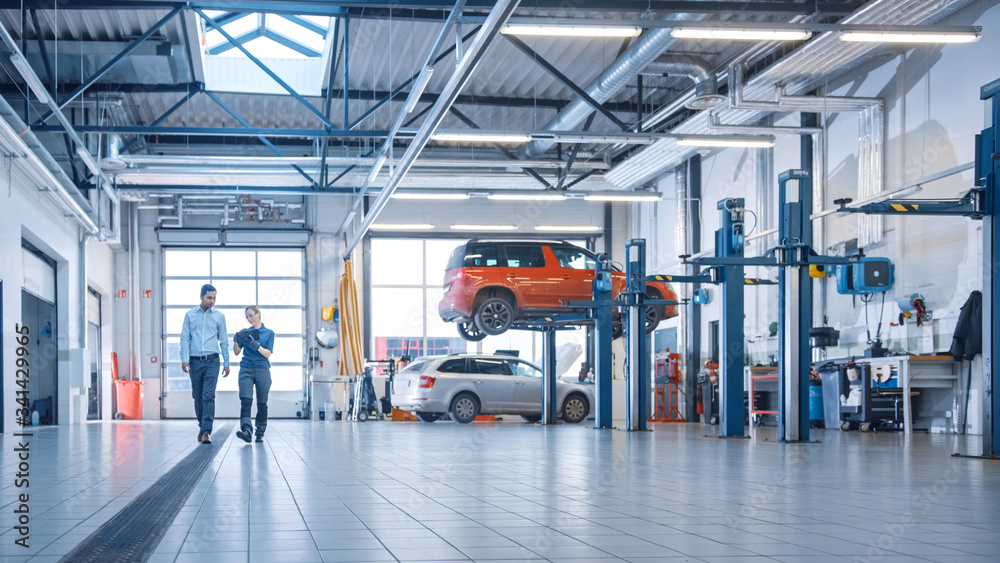
Maintenance and Upkeep of Auto Repair Shop Buildings
Ensuring the longevity and efficiency of an auto repair shop building requires a proactive approach to maintenance.
In addition to the regular tasks of cleaning and inspecting the facility, it is essential to consider factors such as weather conditions, environmental wear, and technological advancements that may impact the building’s structural integrity.
By staying informed about industry best practices and emerging trends, auto repair shop owners can make informed decisions about building maintenance to enhance safety and functionality.
Moreover, investing in energy-efficient upgrades and sustainable building practices can not only reduce operational costs but also contribute to a greener environment. Implementing eco-friendly initiatives, such as installing solar panels, improving insulation, or upgrading to energy-efficient HVAC systems, can enhance the overall sustainability of the auto repair shop building while reducing its carbon footprint.
By prioritizing environmental responsibility, auto repair shop owners can align their business practices with modern sustainability standards.
Regular Maintenance Tasks
Regular maintenance is crucial to keep an auto repair shop building in optimal condition. This includes tasks such as cleaning and inspecting the facility, checking for any signs of wear or damage, and scheduling routine maintenance for equipment and systems.
Adhering to a maintenance schedule helps identify and address issues before they escalate, minimizing downtime and ensuring a safe and functional working environment for employees and customers.
Dealing with Common Building Issues
Over time, auto repair shop buildings may experience common issues such as roof leaks, HVAC malfunctions, or plumbing problems.
It is important to have a plan in place for addressing and resolving these issues promptly to minimize disruptions to business operations. Regular inspections, routine repairs, and proactive maintenance can help prevent or mitigate these common building issues.
Pro tip:
One of the most critical issues with auto repair shops is the need for proper ventilation and air filtration. These shops produce harmful fumes and particles that can pose significant health risks to workers if not managed properly. It’s essential to have effective ventilation systems in place to eliminate these contaminants and ensure a safe working environment.
Conclusion
In conclusion, understanding the basics of auto repair shop buildings is essential for anyone in the automotive repair industry. From choosing the right location to designing an efficient layout and ensuring proper maintenance, every aspect plays a crucial role in the success of an auto repair business.
By investing in a well-designed and properly maintained building, auto repair shop owners can create a professional and customer-friendly space that enhances their business operations and reputation.
SteelCo Buildings has over 23 years of experience dropshipping customizable steel building materials, such as auto repair shops and commercial buildings, nationwide.
Our team possesses the expertise to coordinate PEMB materials delivery optimized to meet your construction timelines with initial design/concept, support, and guidance through the permit and/or zoning process.
We are also a locally-awarded General Contractor and provide design-build services for commercial facilities, retail, and mixed-use developments in Georgia.
——————————
Frequently Asked Questions
What’s the average size of an auto repair building?
The average size of an auto repair building in the U.S. can vary widely depending on the services offered and the location. However, a common size for a professional auto repair shop is a 40×60 metal building, which provides ample space for multiple service bays and equipment. Other popular sizes mentioned for auto repair shops include 24×30, 30×60, and 50×60.
How much does it cost to build an auto repair shop?
On average, the initial costs to start a 5,000 sq. ft. auto repair shop range from $67,200 to $225,500. This includes expenses for equipment, building refurbishment, rent deposit, and licenses
What zoning code do I need for an auto repair shop?
An auto repair shop typically needs a lot zoned C (Commercial) or I (Industrial). These zoning designations are suitable for businesses like auto repair shops because they allow for commercial and industrial activities, including vehicle repair and maintenance.

